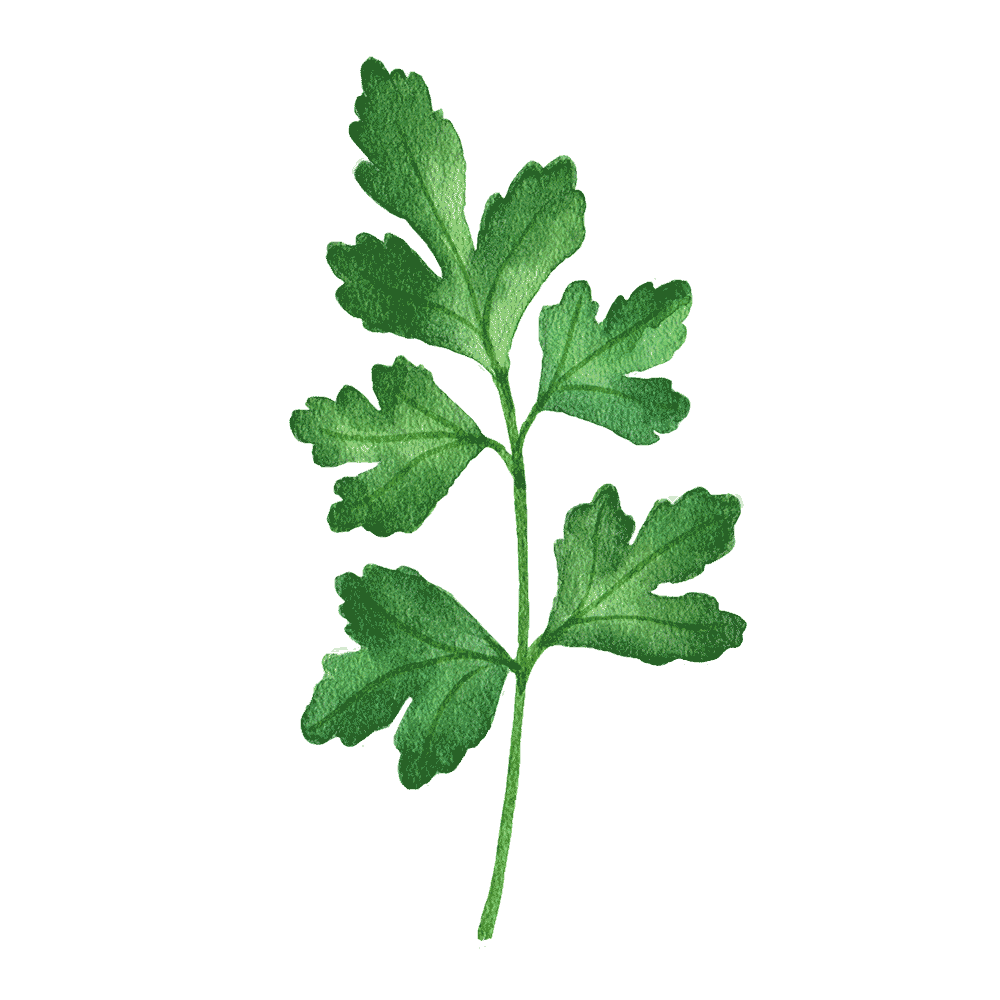The Best Vegetables to Grow for Beginners
Knowing what to prioritize and grow in your kitchen garden can be overwhelming, so we're bringing you a list of our top five veggies to grow alongside your favorite herbs and leafy greens.
Okay, full disclosure: two are root crops, one is a legume, and two are technically fruit—though you probably wouldn't be tempted to mix them into a fruit salad. You could toss all five of these plant parts onto some leaves and make one heck of a regular salad, though!
These five plants are not only tried and true in our own gardens season after season, but they're generally beloved and consumed by all family members, making them our kitchen garden stars.
Best Vegetable to Grow #1: Radishes
Three Reasons Radishes Are the Best Vegetable to Grow for Beginners
Radishes are in the super nutritious Brassica Family
Radishes, cousins to kale and broccoli, are high in fiber and vitamin C. They're in the cruciferous vegetables group, which have been shown in some studies to prevent tumors and rid the body of cancer-causing substances.
Radishes add a little spice
I know I've grown a good crop of radishes when they're just a little spicy and 100% crisp when I bite into them. There's no way you'll think a salad is dull if you toss some radish slices in there. I've also seen people bite into a radish between food tastings to cleanse the palate, the way you'd eat a bit of ginger with sushi.
Radishes give you double the bang for your buck
Not only can you eat the delicious root, you can also eat the radish greens. Sauté them or use them in place of basil to make a pesto.
Radish Growing Tips
I didn't love growing radishes all that much until I discovered the French breakfast radish. I highly recommend giving this variety a try in your own kitchen garden.
Radishes love cool weather. I typically plant mine when the weather is ranging between 35 to 65 degrees Fahrenheit, which happens in March for me. Radishes will start to bolt and form flowers as soon as the temperatures get too hot (over 80 or so degrees).
If you're interested in learning more about radishes, here are five tips for growing perfect French breakfast radishes, steps to replant thinned radishes, and three signs to look for to know when your radishes are ready to be harvested.
When you end up loving radishes as much as we do, you'll want to save your own seeds for next year. Here's where radish seeds come from and how you can harvest and store your own radish seeds.
Best Vegetable to Grow #2: Peppers
Peppers Are a Great Vegetable to Grow in Raised Beds
It seems like peppers are on everyone’s wish list for things they want to grow in their kitchen gardens—and for good reason. We love growing smaller pepper varieties (like shishito or jalapeño) in the kitchen garden for these reasons:
peppers are pretty low maintenance to grow
You can get tons of small peppers off of just one plant, and because they're smaller, you don't have to wait as long to harvest them (compared to bell peppers, which require 60 to 90 days). Plus, they're much more forgiving about over- or under-watering than other fruiting plants.
peppers pack the heat... or not!
Not everyone loves the burn of a jalapeño pepper. And that's fine. Shishito peppers offer a flavorful alternative with their nice, often sweeter flavor (only occasionally does one grow really hot).
peppers manage to be healthy without that "eat your veggies" stigma
Peppers are rich in vitamins A and C, potassium, folic acid, and fiber. Even so, they're one of the few vegetables I can reliably get all four of my kids to eat.
Pepper Growing Tips
Peppers grow best in the warm season, which means you can’t put them outside until the threat of frost has passed (and you want to harvest them all before the first frost of your next cold season arrives). For most of you, that makes peppers the perfect plant to grow in the summer.
Give these guys a little bit of room in the garden, stake them to hold them upright when the fruit gets heavy, and you'll soon be celebrating with a bowl of delicious peppers you've harvested fresh from your garden.
Read the step by step to grow your own shishito peppers.
Best Vegetable to Grow #3: Cherry Tomatoes
Cherry Tomatoes Are a Great Vegetable to Grow at Home
Growing tomatoes up an arch trellis is kinda my thing. I'd go so far as to say there are few accomplishments in the garden more exciting to me than when two tomato plants meet at the top of an arch. I love the beauty of the vines forming a mini jungle along the trellis, their limbs heavy with fruit.
Here are three other reasons I love cherry tomatoes:
cherry tomatoes give you fruit over time
Cherry tomatoes are a vining plant that will give you little clusters of fruit over time. Two of my favorite cherry varieties to grow are Sun Gold and Juliets.
cherry tomatoes go with everything
Vine-ripened tomatoes are one of the best things to come from the garden, and they can be added to so many dishes. Again, maybe not a fruit salad, but there are so many different ways you can incorporate cherry tomatoes into your meals.
cherry tomatoes spend a long time in the garden
I usually get to enjoy the vines on my arch trellises for at least 90, if not 120, days, which is a long time in the garden world. That means many weeks of going outside with a bowl and picking fresh, juicy balls of flavor.
Cherry Tomato Growing Tips
These plants love to grow in warm to hot temperatures and receive loads of sunshine. They have deep roots, so they prefer a bigger garden. Word to the gardening wise: both types of tomatoes need support (stakes, cages, or trellises) and are hungry for loads of nutrients—they'll take whatever your soil gives them and still want more.
Learn how long it takes a tomato to ripen on the vine, and here's your step-by-step guide to growing tomatoes up an arch trellis.
Best Vegetable to Grow #4: Carrots
Carrots Are a Low-Maintenance Vegetable to Grow on Your Own
Homegrown carrots might look a little funnier than the sleek store-bought ones, but I promise the stuff you pull from your own garden tastes so much better. Here are three reasons you should grow carrots in your kitchen garden:
carrots are edible at any size
Carrots can take a couple of weeks to germinate. Once you start seeing foliage above the surface, that's a good indicator that the root is growing underground. You'll need to wait at least a couple more weeks before your carrots are fully mature, but you can actually pull them from the ground and go right on and eat them. I find that baby carrots are crispier and packed with more flavor.
carrots are simple to plant and grow
The biggest task is to keep the seeds moist during germination. After very little tending (but, perhaps, some impatient waiting and wondering if anything's happening in the soil, there are few things more rewarding or exciting than pulling a carrot out of the earth.
carrots are ridiculously good for you
Carrots are loaded with fiber, vitamins A and K, beta-carotene, and calcium. The best part is you can pick some and leave the rest in your garden for a couple days so that you always can enjoy carrots fresh from the garden, at their peak of nutrition.
Carrot Growing Tips
Carrots love cooler weather (between 45° and 70°F). For many of you, that means you'll grow them in the spring and fall, but for those with mild winters, you can actually grow your carrots throughout the winter months. If you plant a fall crop and still have carrots hanging out in your garden in late fall, a little frost can actually make them sweeter.
Here's how to make kitchen garden carrot juice, one of my favorite ways to enjoy carrots (and sneak something healthy to my kids).
If you've never grown carrots before, I hope this inspires you to give them a try. There's really nothing more delightful than pulling a beautiful, edible root from your garden.
Best Vegetable to Grow #5: Sugar Snap Peas
Sugar Snap Peas are one of the Best Vegetables to Grow
Sugar snap peas were actually bred by a farmer not all that long ago to combine the edibility of the snow pea with the sweetness of field peas. The best of both varieties! Here are three reasons we love growing sugar snap peas:
sugar snap peas are mange tout
That's just a French phrase for "eat all", meaning you can eat the pea, the pod, the shoots—everything. And it's all delicious. Compare that to two other veggies in this list, tomatoes and peppers, where you can only eat the fruit and might get sick if you were to eat the leaves.
sugar snap peas give your trellises something to do when it's too cool for tomatoes
There are many varieties of sugar snap peas, but climbing varieties can reach 6 to 8 feet and will welcome the support of a trellis. Since they're cool season plants with a relatively short growing season (about 6 to 8 weeks), you can grow them in the early spring and early fall cool windows on either side of your tomato season. If you're somewhere warmer, then sugar snaps will give your trellis something beautiful to hold during your winter months.
sugar snap peas are really healthy, despite their name
These peas are good sources of protein, vitamin C, iron, and potassium. Plus, they're just as good raw as they are cooked.
Sugar Snap Peas Growing Tips
Sugar snap pea plants like full sun, but in hotter climates some afternoon shade is appreciated.
You should expect to get about a fourth of a pound of peas per plant. That means you probably need to grow several plants in order to get a good weekly harvest, something equivalent to what you’d bring home from the grocery store. If you want to get one pound per week of peas from week 8 to week 12 in their growing cycle, you'll need at least four plants.
Here are four steps to increase your sugar snap peas production. Follow those tips and you'll soon be harvesting pounds and pounds of peas in no time (and hopefully some of them will make their way into the kitchen and not be immediately consumed).


There you have it—our top five veggies to grow in the kitchen garden. They span all growing seasons. Two will be incredible surprises when you yank them from the ground, two will need trellises, but they will all be sure to please whoever you share your harvests with.














